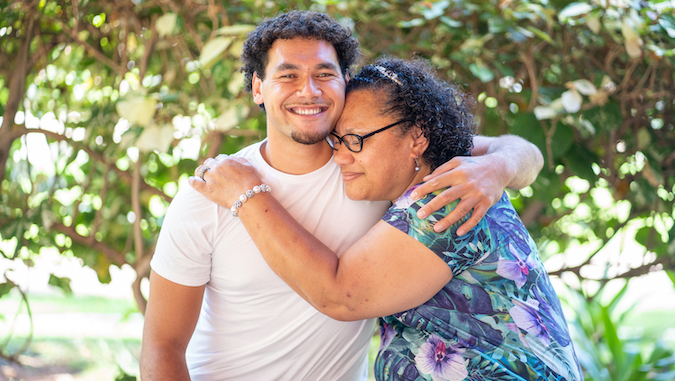
The National Cancer Institute has revealed for the first time that young Native Hawaiians and Pacific Islanders (NHPI) are the race group that experiences the highest rates of cancer death among people their age in the U.S.
A manuscript published April 19 in the Journal of the National Cancer Institute (JNCI) reports that between 2018 and 2020, NHPI between the ages of 20 and 49 had the highest death rate from any cancer, compared to 20 to 49-year-olds from other racial and ethnic groups (American Indian/Alaska Native, Asian, Black, Latino or White).
"These disparities clearly demonstrate the importance of disaggregation of Asians and NHPIs from one another," said University of Hawaiʻi Cancer Center researcher and Hawaiʻi Tumor Registry (HTR) Principal Investigator, Brenda Hernandez.
Until recently, race reporting at the federal level in the U.S. lumped Americans of Asian, Native Hawaiian and Pacific Islander ancestry all in a single category. In 1997, the "Asian/Pacific Islander" category was split into "Asian" and "Native Hawaiian or other Pacific Islander." It took another 10 years to transition fully to using the updated race list on individual states' death certificates, so statistics like cancer death rates for this new set of races have only been reportable since 2018.
Cancer surveillance of local ethnic communities
Because of Hawaiʻi's unique multiethnic composition, HTR, responsible for cancer surveillance in the state of Hawaiʻi, has long collected and reported these more granular statistics.
"In Hawaiʻi, Asian, Native Hawaiian and Pacific Islander ethnic communities have experienced dramatically different cancer burdens," Hernandez said.
Last year, HTR's Hawaiʻi Cancer at a Glance revealed that Native Hawaiian women have higher death rates from breast and lung cancers than do women of Chinese, Filipino, Japanese, other Asian and white races in Hawaiʻi.
- Related UH News story: Cancer disparities impacting Native Hawaiians, Pacific Islanders highlighted in national report, June 8, 2022
Addressing disparities from multiple angles
Under the leadership of its new director Naoto Ueno, the UH Cancer Center is taking a "multifactorial approach" to addressing these disparities. This includes construction on the highly-anticipated Early Phase Clinical Research Center, which would allow UH Cancer Center researchers to conduct innovative trials in Kakaʻako. It also involves intense efforts led by the UH Cancer Center in collaboration with the state, legislators, local healthcare systems, advisory boards, patient advocacy groups and others.
We are trying to establish more robust clinical research so that we can provide more clinical trials that would allow people to stay in state.
—Naoto Ueno
"We are trying to establish more robust clinical research so that we can provide more clinical trials that would allow people to stay in state," Ueno said. "We need to make a collective impact with the various stakeholders, and the UH Cancer Center could be the driving force to make these changes."
Ueno said that the JNCI report is timely as May is Asian American, Native Hawaiian and Pacific Islander Heritage Month. However, it does not change the UH Cancer Center's philosophy or general direction, since the center is already focused on serving the needs of the residents of Hawaiʻi and USAPI, which includes large Asian, Native Hawaiian and Pacific Islander populations; however, it does raise awareness at the national level. This then provides more opportunities for funding of more focused research related to unique diverse ethnic backgrounds.
"Even for clinical trials, if we can determine the genomic and molecular connection between the kind of aggressive disease you have, we can potentially personalize treatment based on racial or ethnic background," he said. "There are many different opportunities with pharmaceutical companies and more."






